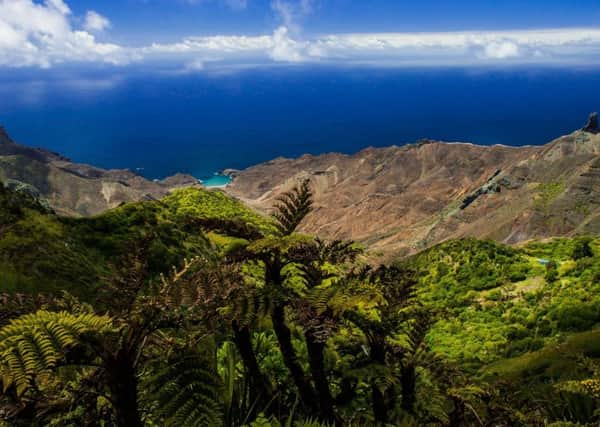Long journey through Helena and high water


We’re discussing the impact the new airport will have on St Helena when the first flights arrive this year. No exact date has been confirmed, but the government say it will likely be end of May.
I’ve already spent a few days on the remote island and realised change happens slowly on this tiny speck of land surrounded by the South Atlantic, which was discovered by the Portuguese 500 years ago.
Advertisement
Hide AdAdvertisement
Hide AdMobile phones finally arrived last year, and there’s intermittent internet reception in some houses. But the local government hopes the pace of change will quicken when the first plane touches down.
The plan is for tourism to fuel economic development and my new friend is referring to the cavalcade of Napoleon enthusiasts expected to make the pilgrimage here over the next six years, as the Saints commemorate two centuries since the self-declared French emperor lived and died there.
St Helena’s steep cliffs and rocky outcrops made it a perfect location for Britain to send its worst enemies, and thus Napoleon was exiled to the South Atlantic in 1815. Much of his life on the island was under a somewhat relaxed form of home detention in Longwood House, but his first abode was the Briars Pavilion on the estate of the Balcombe family, which is where I begin my Napoleonic tour.
He developed a kinship with Elizabeth ‘Betsy’ Balcombe, the 14-year-old daughter of William Balcombe, while there. Her French was perfect and she helped soften Napoleon’s introduction to his new surrounds.
Advertisement
Hide AdAdvertisement
Hide AdBut their friendship was only short, as Napoleon adopted a more morose demeanour when he was moved to Longwood House a few weeks later, and kept under military guard.
“It’s not true he died on his billiards table,” my wonderfully informed tour guide, Ivy, explains, as we begin our walk through the property. “He never played on it either,” she adds with a smile.
He died at the age of 51 in the adjacent room, most likely of stomach cancer, Ivy tells me - not arsenic poisoning as some theorists believe.
Days later he was buried on a hillside beneath Longwood, in a silent ceremony conducted by the British garrison that was stationed on the island, primarily to ward off an escape attempt.
It’s the third site on my tour.
Advertisement
Hide AdAdvertisement
Hide AdDown a grassy path to a tranquil nook, the ghostly silence around his tomb is broken only by the rustling of banana trees and nearby birdsong. Napoleon was so taken with the peacefulness of the location while passing on horseback that he himself declared it would be his final resting place.
It’s a beautiful place to reflect, as many have come to do during my visit, which coincides with a re-enactment of his funeral by officers from the HMS Lancaster and RFA Gold Rover.
The vessels are docked off the island, so the sailors can join the first of many commemorations over the next six years.
Sunshine breaks through the treetops while we watch the ceremony below, reminding me of the sunny and slow days on the deck of the RMS St Helena, the last of the Royal Mail Ships, on my voyage to the remote island.
Advertisement
Hide AdAdvertisement
Hide AdIt is St Helena’s lifeline, transporting not just people but cars, fridges, doors, food, pets and anything else Saints need on its monthly trip from Cape Town. There is no industry on St Helena; everything must be brought in, so a gander at the ship’s manifest is like a voyeuristic gaze into island life.
Life on board is a throw back to 1950s travel, with formal dress expected at dinners, games of quoits and skittles on the deck, and plenty of hours spent lazing about in lounge chairs, staring out across an unbroken sea and chatting to new friends.